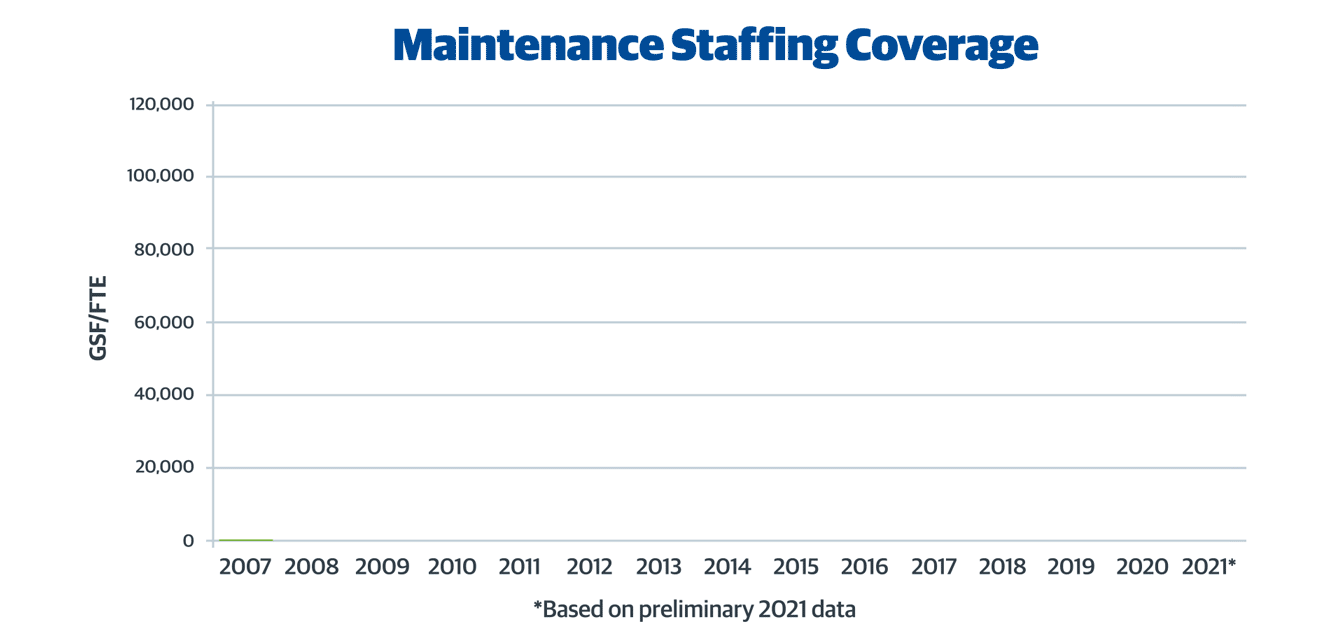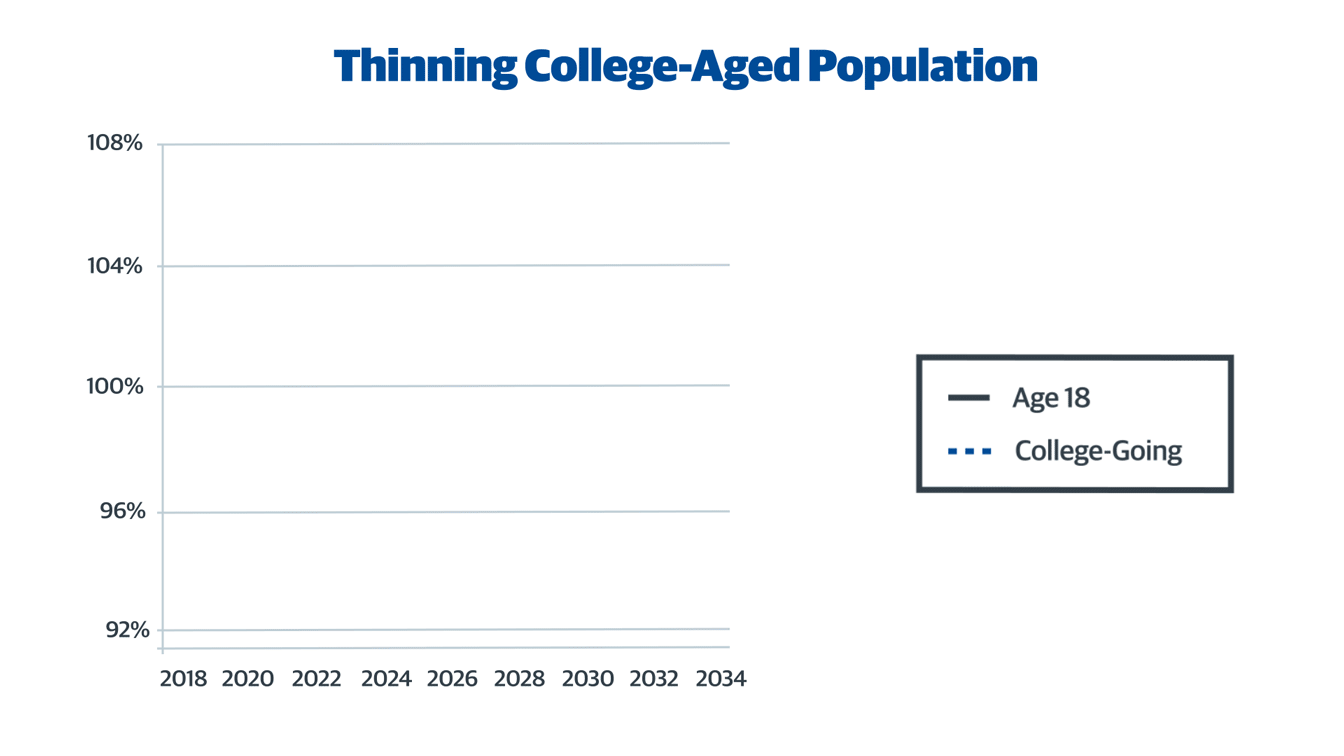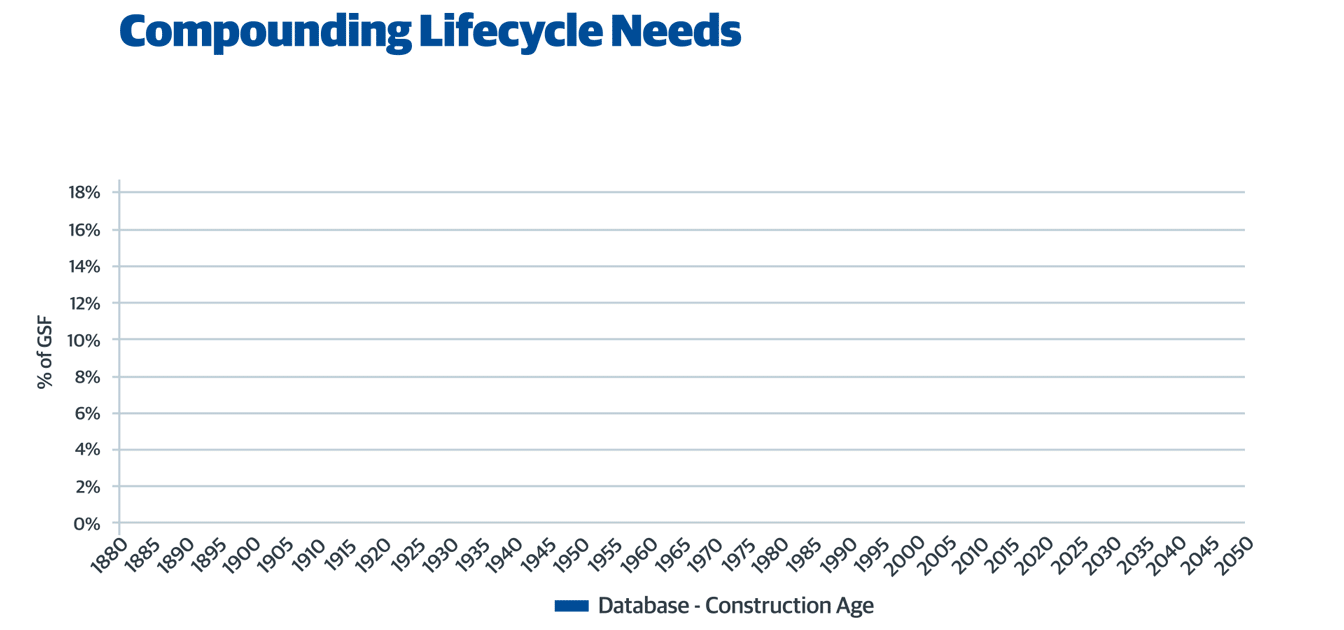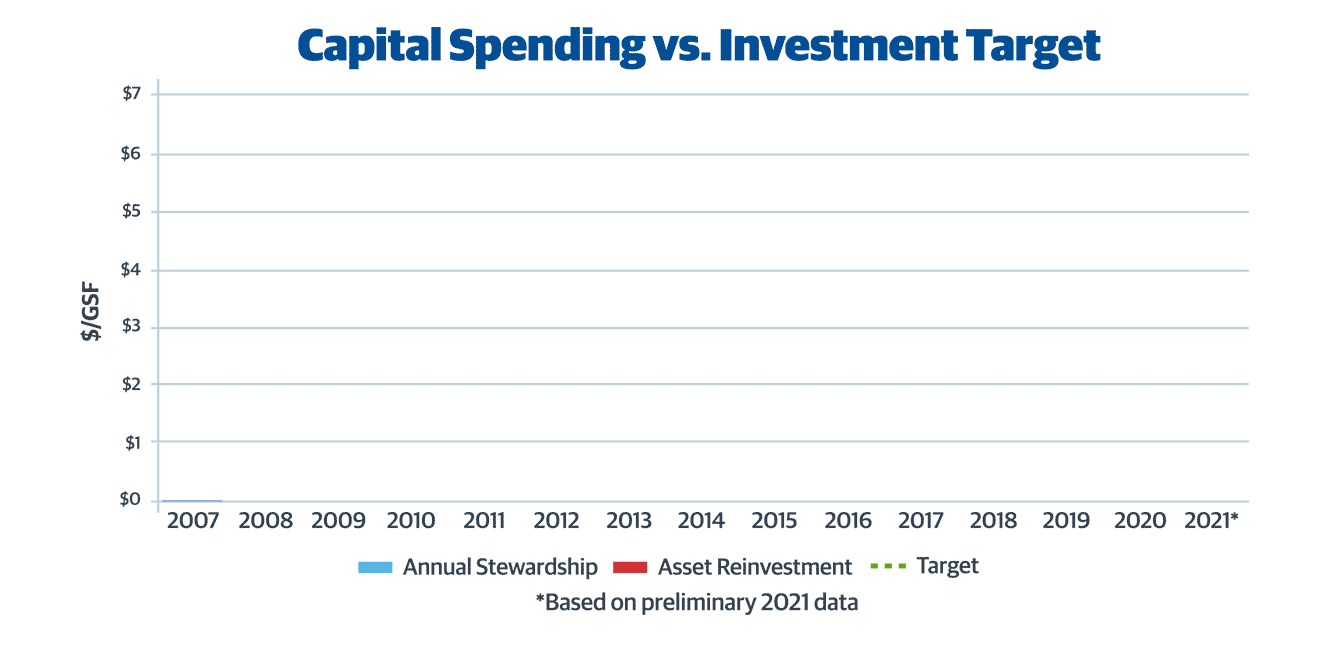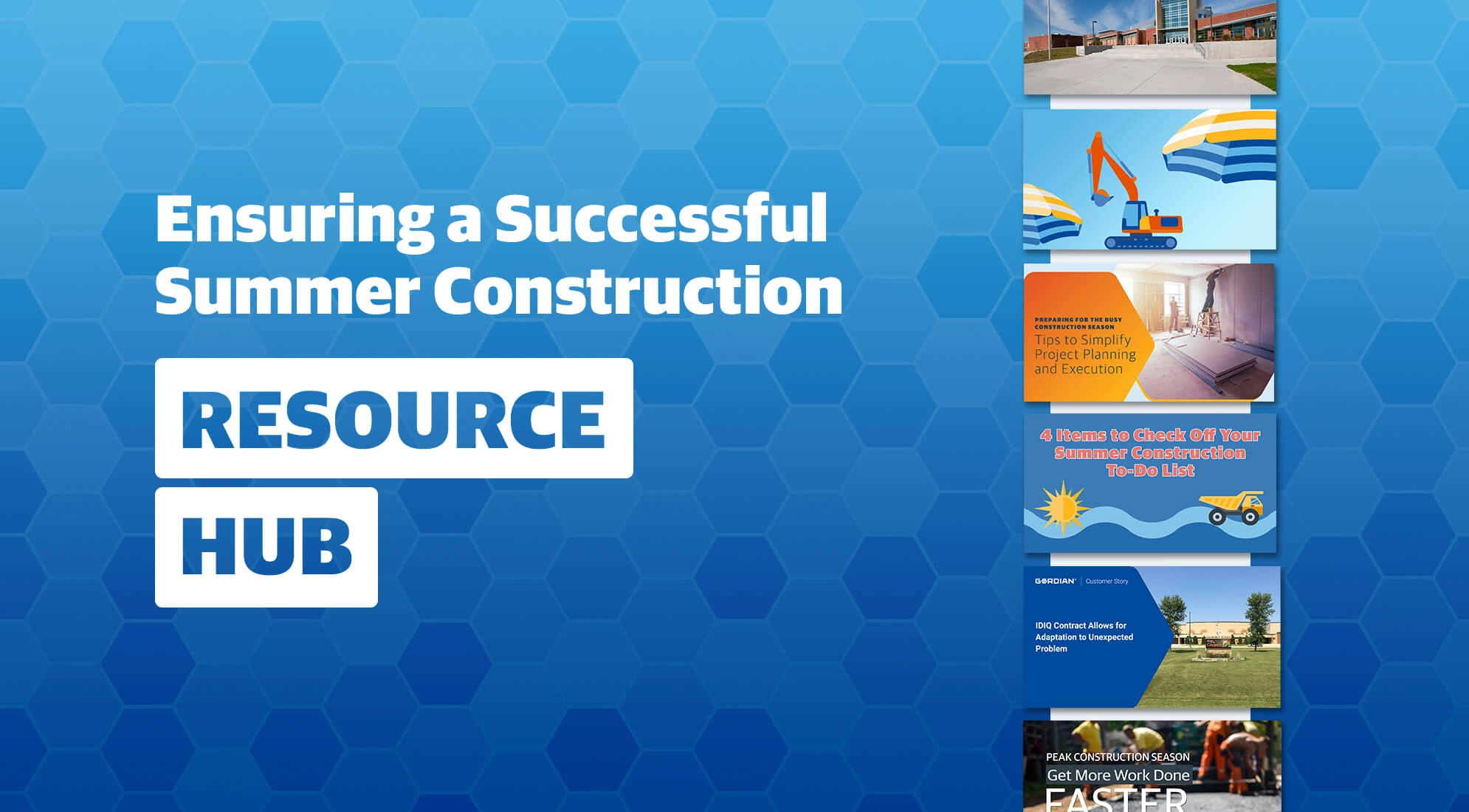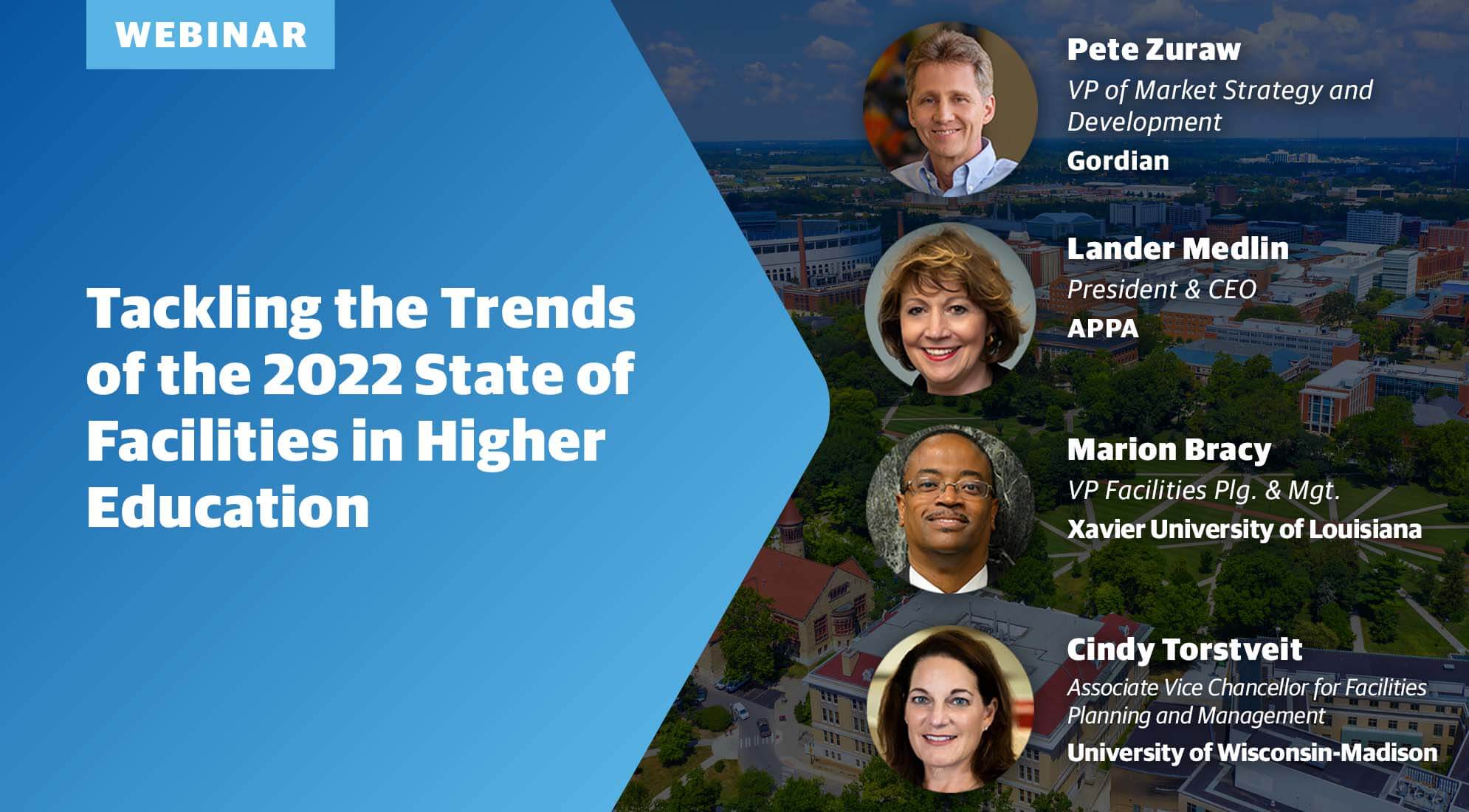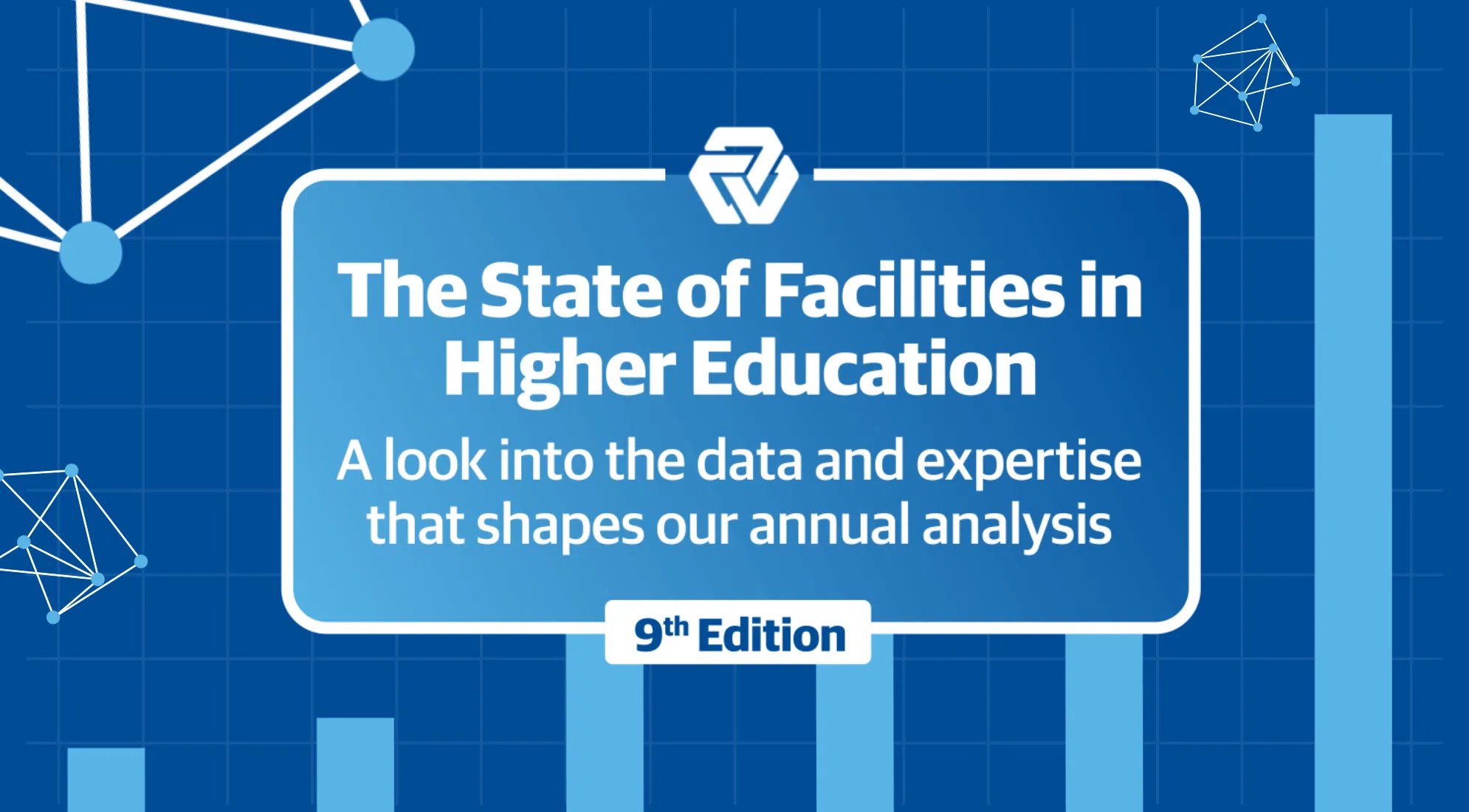Every year, Gordian publishes the State of Facilities in Higher Education, a report that examines the pivotal trends and benchmarks from our database of 52,000+ campus spaces across North America. The annual publication helps campus leaders establish a contextual understanding of their facilities performance and enables them to assess how they can stay ahead of a curve that is changing quickly.
As a complement to this year’s State of Facilities report, we partnered with APPA to survey a sample of their members to capture the experience and perspectives of facilities professionals on the frontline. Combined, these datasets uncovered several threats facing campus spaces.
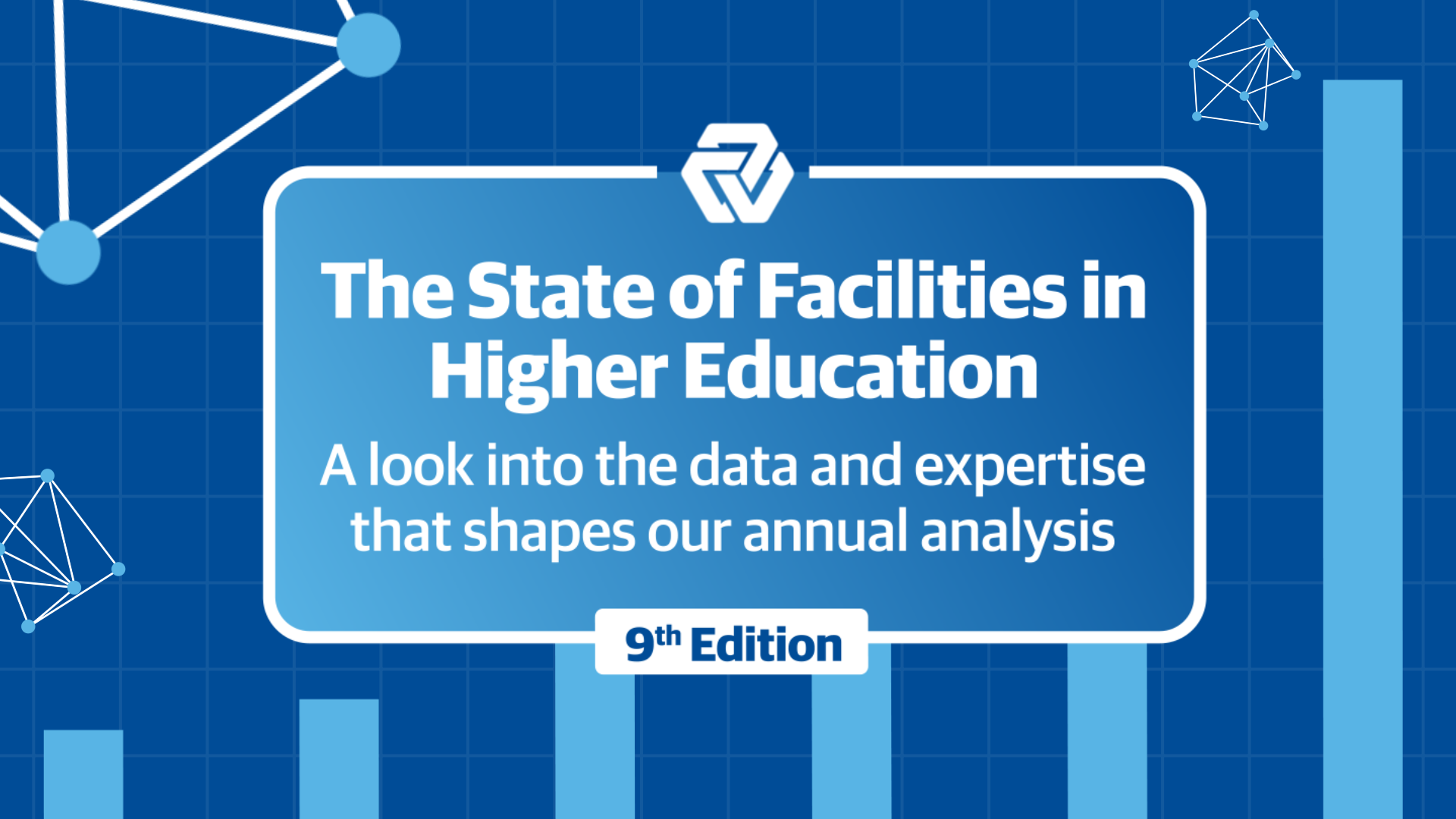
1. Shrinking Facilities Staff
The APPA survey asked respondents to identify their three biggest areas of concern for the future. Respondents chose “Finding employees with necessary skills to fill vacancies” more than any other concern and they did so by a mile. Not only are higher education facilities leaders worried about finding people with the skills to maintain campus spaces, but they’re also afraid they won’t find anyone to work in facilities, skilled or unskilled.
Our data shows they are right to be concerned.
Between 2020 and 2021, campus facilities teams shrank by 8%, and the average full-time maintenance staffer now has over 100,000 gross square feet of campus space to cover for the first time ever. 100,000 gross square feet is 50% more area than the White House. Imagine being responsible for taking care of the White House and then another half of a White House by yourself. That’s what campus maintenance workers are being asked to do.
This staffing squeeze accelerates burnout, aggravates knowledge gaps and leaves little time for all but the most basic work. And the faster the facilities workforce shrinks, the greater the potential for facilities to suffer.
2. Unchecked Campus Space Growth
Higher ed campuses have been ballooning for decades. In fact, the campus of 2020 is 113% larger than the campus of 1970. Yet from 1970 to 2018, the population of 18-21 year-olds grew by only 17%. It doesn’t take a data analyst to see that the math just doesn’t add up.
The Gordian database shows that campus growth outpaces enrollment, adding to operating and capital renewal burdens. And the great campus expansion shows no signs of slowing down. 47% of APPA members we surveyed told us their institution is considering growing their campus spaces over the next five years. And all this while operating budgets have plunged 9% since fiscal year 2019 and remote learning is exploding.
If campuses don’t stem the tide of expansion, they may find themselves house poor.
3. The Enrollment Cliff
Higher ed enrollment peaked ten years ago, back in the 2012/2013 academic year. Over the following seven years, enrollment fell 7%. That’s 1.5 million students that schools were counting on to arrive on campus but who chose to opt out of the college/university experience. The situation has worsened.
The National Student Clearinghouse Research Center report from January 13, 2022, reveals an additional enrollment drop of 5.1% between 2019 and 2021, representing 938,000 students. Some schools still enjoy healthy enrollment, but for many others, the kids just aren’t coming to campus. One reason is that there are fewer of them than there used to be.
Campuses are on the precipice of an enrollment cliff, a phenomenon popularized by Professor Nathan Grawe who began sounding the alarm about declining birth rates years ago in his groundbreaking book, “The Agile College.” Grawe warned that the college-aged population would thin beginning in 2026 and extend into the future. What he could not predict was the coronavirus pandemic.
The Center for Disease Control has reported declining birth rates every year since “The Agile College” was published, including an astonishing 4% in 2020. This extends the enrollment decline until 2038. The implications for the built environment on all but a very few college campuses are clear: There will be more space than is necessary to deliver the current program.
4. Aging Campus Spaces
There’s an overwhelming deluge of needs coming to campus spaces. Historical waves of construction in higher education have produced a layering of lifecycle repair and replacement needs that will bear down upon campuses over the next 10-15 years.
In April of 2021, Gordian joined APPA to report the level of capital investment backlog for higher education nationally. Despite annual investments of $36.8 billion in operations/maintenance/utilities and a further $27 billion in capital investment of new and renovated space, higher education as a whole faces an estimated $112 billion in urgent deferred renewal. That number is only anticipated to grow larger with the coming lifecycle demands of those two historic waves of construction outstripping the planned investments by campuses in existing space. The challenge of having this much potential future investment must force campuses to consider whether they will continue to need the spaces they currently have.
Campuses surely aren’t spending to keep up their current spaces. Our database shows a 19% reduction in facilities investments from FY2020 to FY2021. And if that weren’t dire enough, the capital spending shortfall is approaching 40%. This major gap in spending to target is only accelerating deferred renewal needs, turning them into distressed assets.
A Toxic Mix of Circumstances Threatening Campus Spaces
None of these threats to campus spaces exists in a vacuum. Each affects and exacerbates the other. Fewer college-aged people means fewer people enrolling in higher education. Fewer enrollees means less money to invest in campus spaces or the people who maintain them. Less money to invest in campus means facilities age poorly. Poorly-aged facilities turn off potential students and the cycle continues.
To alleviate these threats to campus spaces, higher ed leaders must adapt. The status quo is what got them in this situation, it won’t get them out of it. One way schools are adapting is by giving facilities leaders more of a voice. 56% of APPA survey respondents said they have had greater influence on campus since the pandemic began. That’s positive momentum that should be nurtured.



